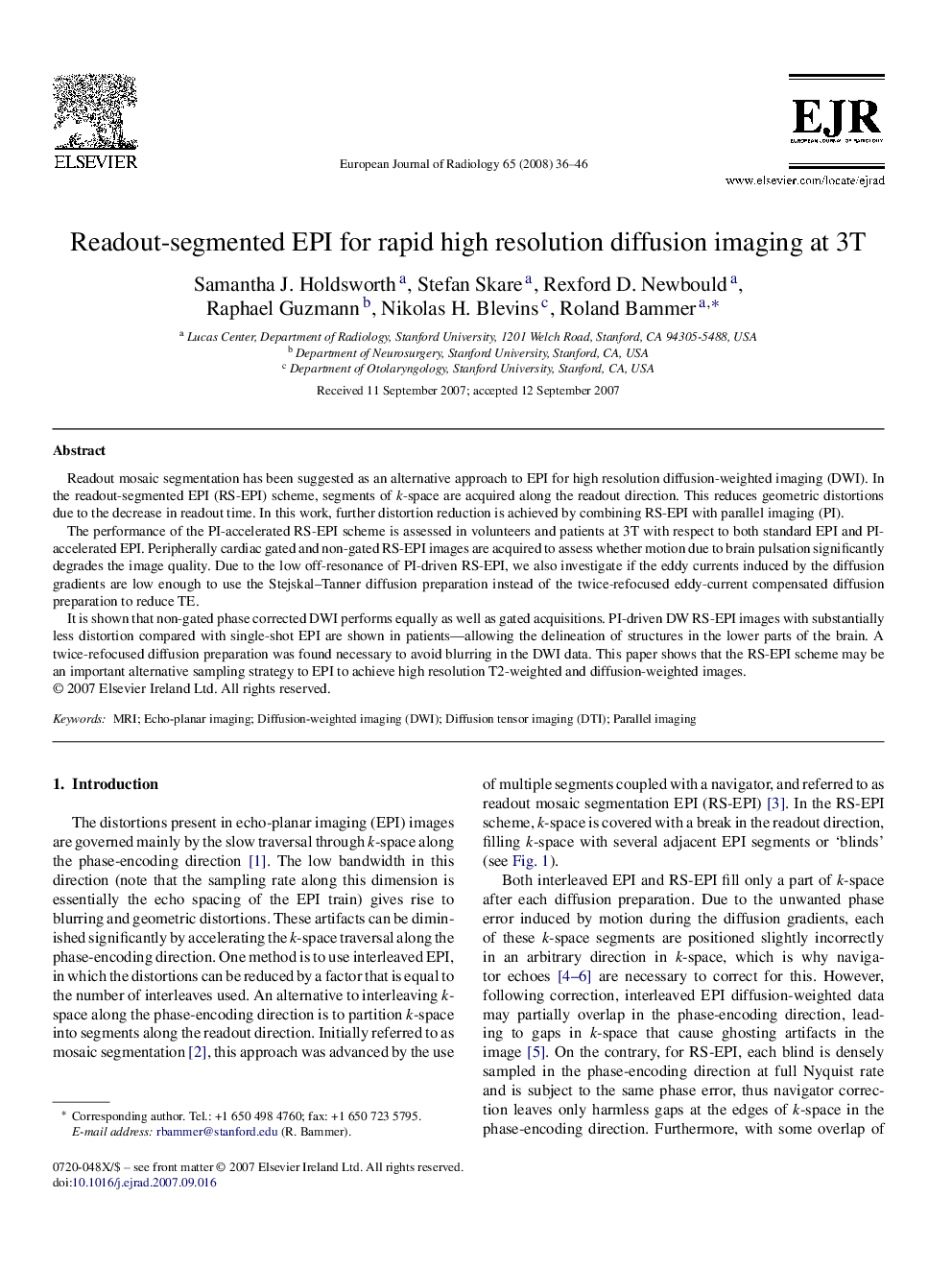| Article ID | Journal | Published Year | Pages | File Type |
|---|---|---|---|---|
| 4228307 | European Journal of Radiology | 2008 | 11 Pages |
Readout mosaic segmentation has been suggested as an alternative approach to EPI for high resolution diffusion-weighted imaging (DWI). In the readout-segmented EPI (RS-EPI) scheme, segments of k-space are acquired along the readout direction. This reduces geometric distortions due to the decrease in readout time. In this work, further distortion reduction is achieved by combining RS-EPI with parallel imaging (PI).The performance of the PI-accelerated RS-EPI scheme is assessed in volunteers and patients at 3T with respect to both standard EPI and PI-accelerated EPI. Peripherally cardiac gated and non-gated RS-EPI images are acquired to assess whether motion due to brain pulsation significantly degrades the image quality. Due to the low off-resonance of PI-driven RS-EPI, we also investigate if the eddy currents induced by the diffusion gradients are low enough to use the Stejskal–Tanner diffusion preparation instead of the twice-refocused eddy-current compensated diffusion preparation to reduce TE.It is shown that non-gated phase corrected DWI performs equally as well as gated acquisitions. PI-driven DW RS-EPI images with substantially less distortion compared with single-shot EPI are shown in patients—allowing the delineation of structures in the lower parts of the brain. A twice-refocused diffusion preparation was found necessary to avoid blurring in the DWI data. This paper shows that the RS-EPI scheme may be an important alternative sampling strategy to EPI to achieve high resolution T2-weighted and diffusion-weighted images.
